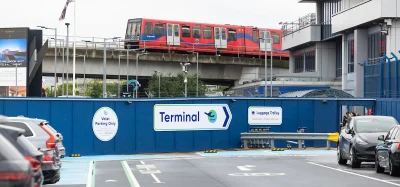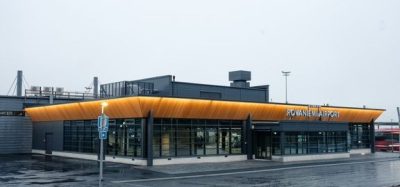Orchestrating airport operation
Posted: 16 March 2005 | Andrea Baroni, Head of Airport Operations, Unique and Jürgen Weder, Partner, Neuropie Consulting | No comments yet
How web-based application software is helping the airport operator Unique to carry out its management role at Zurich Airport.
How web-based application software is helping the airport operator Unique to carry out its management role at Zurich Airport.
Depending on the airport, operators and airlines take on different roles. Passenger growth, carriers’ demands for reduced charges or government’s growing reluctance to subsidise airports may be reasons for an airport operator to shift its responsibility from supplying infrastructure to acting more like the conductor of an orchestra. In the wake of the bankruptcy of SAir Group in 2002 corporate affiliates were individually sold. Among them were also the companies supplying services at Zurich airport. The coordination of their activities, which was until then carried out by Swissair’s Operation Control Centre, ceased to exist. In order to fill the void Zurich airport was forced to transform its role from infrastructure supplier to active manager of airport operation. The challenge was to find a way to coordinate elements of the value chain now owned by different companies and still ensure a consistently high, cost-effective level of service.
More responsibility for the airport operator
Unlike airlines, airport operators are usually not in a position to steer the costs and quality of the entire airport operation, because they have no direct influence on the way airlines and suppliers interact. Unique, the company operating Zurich Airport has therefore set up an organisation called ‘Airport Steering’ to tackle this problem. Contrary to a hub – control which focuses on coordinating ground-handling services, the Airport Steering organisation moderates and influences the entire value chain of airport operation.
Join us live: Shaping the Next Generation of Hold Baggage and Air Cargo Screening
Join us live for an insightful webinar on 11th December at 14:00 GMT, in collaboration with Smiths Detection, as we explore the strategic balance of operational efficiency, regulatory compliance, and sustainability in high-volume security environments.
This session offers a focused look into future-proofing your security strategy.
Key learning points
- Cost Reduction: Strategies to minimize bag travel time while simultaneously reducing operational costs.
- Regulatory Roadmap: Insights into the next wave of regulatory changes and their impact on future investment decisions.
- Sustainable Systems: Practical approaches to building sustainability into security systems and lowering the total cost of ownership (TCO).
- Scalable Solutions: Real-world examples of scalable systems supporting current airport growth and preparing for tomorrow.
Register now for expert insights, case studies, and actionable strategies on operational efficiency!
Unique has taken an active role in optimising airport processes across organisational boundaries. Its motto is Collaborative Decision Making (CDM) (see Box B). However, CDM is only successful in an environment where identical information, knowledge of financial and operational consequences and a common understanding about expected performance is available.
A mutual language for quality
With so many organisations working on the same product, the service quality expected must be defined, monitored and improved across organisational boundaries. At the same time, the omnipresent cost pressure is tempting supplier organisations to trim their own costs without concern for the overall process.
A standard approach to improve punctuality is to nominate individuals from organisations along the value chain and to work out corrective measures in cross-organisational committees. There are three reasons why this approach is unsatisfactory.
- Punctuality targets can rarely be allocated to individual sub-processes or companies, as the tangible contribution of an organisation or a process to quality is very difficult to assess.
- The correlation between quality and costs is very complex and a trade-off is usually rather difficult (i.e. there is no obvious monetary value for an improvement in punctuality available).
- Punctuality is an imperfect measure for quality. It does not take into account how many passengers are affected and does not allow for the size and load factor of the aircraft.
To solve these problems, Unique has opted for the Total Performance Management (TPM) approach (see Box A). These specifically designed key performance indicators express the consequences of an irregularity using the following indicators:
- passenger hours (passenger waiting time);
- aircraft seat hours (unproductive aircraft time spent on the ground), and
- delay minutes (over-usage of airport capacity)
These measures serve as a mutual language about quality. If cash values are attributed to measuring units, value-based decisions become possible. By then measuring the damage done to every stakeholder (passenger, airline and airport), improvement potentials become apparent and necessary investments are directed accordingly.
Accountability and transparency
A vast majority of delays can be assigned to the responsible process owner, i.e. the responsibility centre. The most commonly used argument, delay codes do not allow accurate analyses because they are not assigned correctly most of the time, is valid only at the beginning. The owner of the respective delay code will invariably object if he is unfairly blamed. When Zurich introduced performance management, there were actually very few of the feared endless discussions about who to blame (in case of doubt, the airport assigns the responsibility). After a very short time, responsibility allocation accuracy was more than 95%.
What counts in performance management is the result. The process owner is completely free in designing his processes, provided the result remains satisfactory. By showing the achieved quality in real-time for every element in the value chain to all players, the resulting pressure from within the hierarchy as well as from the other links will ensure immediate improvements.
Because Unique has set a price tag for each performance indicator unit, quality-related investments can be better justified and goodwill-loss translated into money-terms. The table below (Figure 1) shows the opportunity cost per performance indicator. For our example, an airport with about 60,000 pax-h and 170,000 seat-h monthly, the optimisation potential per month along the entire value chain is about USD 3.2 Million.
Any initiative to reduce pax-h or seat-h will eventually improve punctuality and operational efficiency. Part of the success of performance management is transparency and accountability. Another part is delivering information in a comprehensible format and in real time.
New role, new software
Each link along the value chain, as facility management, flight operation, terminal operation or ground services, has tools to plan, schedule and optimise its resources (ERP software). These information systems, which are vital to the smooth running of an airport, display information in the form of tables or bar charts. Advanced systems allow sorting or filtering and sometimes provide colour coding to facilitate comprehension for the reader. Yet, how can such a flood of information from different applications be combined, enhanced and presented in such a way as to make a complex system like an airport comprehensible and easy to analyse?
Business Activity Monitoring (BAM), as defined by Gartner Inc. almost two years ago, differs from traditional data warehousing or business intelligence (BI) applications. Those older technologies focus on historical information, while BAM is concerned about what happened in the past 24 hours. In the case of BAM, real-time dashboards for specific applications and processes have existed for years at electrical utilities, nuclear power plants, military command centres and other organisations. As the majority of corporate information moves online, companies like Unique are realising that they can make better use of this information to help improve their core processes.
Unique did not find any off-the-shelf application that would support its new management role and at the same time comply with performance management and BAM principles. They therefore had an application named ZEUS developed, which has now been in operation since June 2004.
The system specifically sets out to provide an integrated, graphic-based, real-time and collaborative approach to orchestrate the entire airport operation. Features include passenger forecast, flight data, events with comments and actions, environment data, baggage load of baggage system, management summary and live reports with comments and documents attached. Critics of real-time analyses often complain that ’real-time data‘ lacks precision because the input is necessarily incomplete or based on estimation. They certainly have a point there. However, faced with the choice of 95% versus 0% accuracy, managers will clearly opt for the former. Today, most time-critical management decisions are reached by applying a combination of available verified data, forecasts and assumptions.
Integration and collaboration in a portal
One of the characteristic features of an operations control is the array of screens displaying the information needed for monitoring and control. The multitude of hardware may appear at first sight impressive, but, in practice, no one can afford to employ enough people to monitor all of the terminals simultaneously, not considering all the numerous keyboards needed to operate all screens. In the age of web-based systems, it is best practice to use a portal to integrate the various applications and to display them on a single monitor. Standard or custom connectors can be used to integrate non-web-based solutions in the portal. Further benefits are gained from single sign-on to the integrated applications, personalisation of the portal, document management, the collaboration of support elements and user administration.
Unique uses Opentext’s Livelink portal as a gateway and user interface integration platform for its various applications and, in particular, for document management. Applications like ZEUS and SAP are fully integrated in the Livelink portal.
Integration in the Livelink portal provides three major benefits:
- You can incorporate other applications or Web content from your intranet or the Internet, if required.
- The portal may be configured to deal with the unique characteristics of a specific company, while also taking the integration aspect into account. For example, a user may be employed by an airport partner, but he is still part of the overall airport system.
- Collaboration options (document management, news, discussion) promote networking between the airport partners e.g. documents saved in ZEUS may be accessed at any time from the portal’s document management.
Parallel to the introduction of ZEUS, Unique also started an award-winning Enterprise Application Integration (EAI) initiative. To utilise all data sources, from flight information to radar data and up to and including weather information there is an interface with the integration platform – irrespective of whether the source is company-internal or -external. Here, Unique employs the solution offered by Webmethods.
All communication between client and server, between the ZEUS server and Integration Broker takes place via XML Web services. During the rollout, it became clear that this standardisation makes for very smooth interaction between J2EE and .NET (interoperability across different platforms) and is reusable for other business requirements.
Mission possible
What are improvements that an airport like Zurich expects from implementing ‘track and act’ software like ZEUS and what results have been achieved so far? While key concepts such as information visualisation, responsibility accounting and collaboration have been discussed previously, we would like to emphasise transparency, real-time monitoring and keeping pace with dynamic business change.
Most children are extremely transparent. They enjoy playing card games but require all players to keep their cards exposed. If you attempt to hide your cards and play the game correctly, they assume that you are cheating and holding back information. On the other hand, if all cards are exposed, they learn how to manipulate the plays and direct the players’ activities. Transparency has its advantages – and challenges. Organisational transparency helps Zurich Airport create trust among stakeholders, encourages more informed decision making, improves data quality and supports greater participation. For instance, this year Unique will reduce departure delays that their organisation caused, by 60,000 passenger-hours. This means that 120,000 passengers will not wait half an hour on departure anymore. Hence, opportunity cost of about USD 2.6 million will be prevented. With ZEUS not only they, but also their partners, can monitor the success of this initiative live and will be ready to contribute to improvements along the supply chain.
“Ask me tomorrow – that’s when I get the statistics.” was the answer of an airport manager of a major European airport when asked about the current state of his operation. Most airports are in fact, managed purely reactively and at a very slow pace. This can be compared to a car fitted with several excellent rear-view mirrors but with windscreen and side windows made of frosted glass. Because information on many important details has to be collected and combined from different systems, it often takes considerable time before you learn what has happened and how certain events have negatively affected his operation. By that time, it is often too late to take corrective action. Managers would wait until the Management Information System (MIS) delivered statistics about operation. Now, they are involved on a daily basis – there is an increased awareness on quality and operation in general.
Software such as ZEUS offers the flexibility to adapt quickly to meet the changing needs of today’s dynamic business. Suppose, for example that an airport needed to implement a new system to measure queues at security checks. With passable effort, actual data of queues is displayed on an onscreen airport map, exceptions are reported as events and live reports are generated and displayed. Instead of building a dashboard for each application or corporation, the new paradigm is to combine operational data along the supply chain in a comprehensible graphical format allowing a user to gauge the overall status and performance of each link immediately and drill-down where necessary.


Figure 1: Performance indicators
Andrea Baroni
Andrea Baroni has been head of airport operations for Unique since 1st of January. Since his appointment, he has initiated the Airport Steering group and the development of ZEUS.
Jürgen Weder
Jürgen Weder, lic.oec.HSG, is a partner with NeuroPie Consulting AG, the company managing the Zeus Project. NeuroPie assists companies in developing and implementing ideas and concepts. Jürgen Weder also teaches business information management at the Zurich University of Applied Sciences.
The International Airport Summit is open for registration!
Date: 19 – 20 November 2025
Location: JW Marriott Hotel Berlin
At our flagship event of the year, we will dive into the future of airport operations, with expert-led sessions on passenger experience, innovative smart technologies, baggage handling, airside operations, data, security, and sustainability.
This is where global airport leaders come together to share insights, challenges, and real-world solutions.
Limited complimentary passes are available for eligible professionals – first come, first served!


















